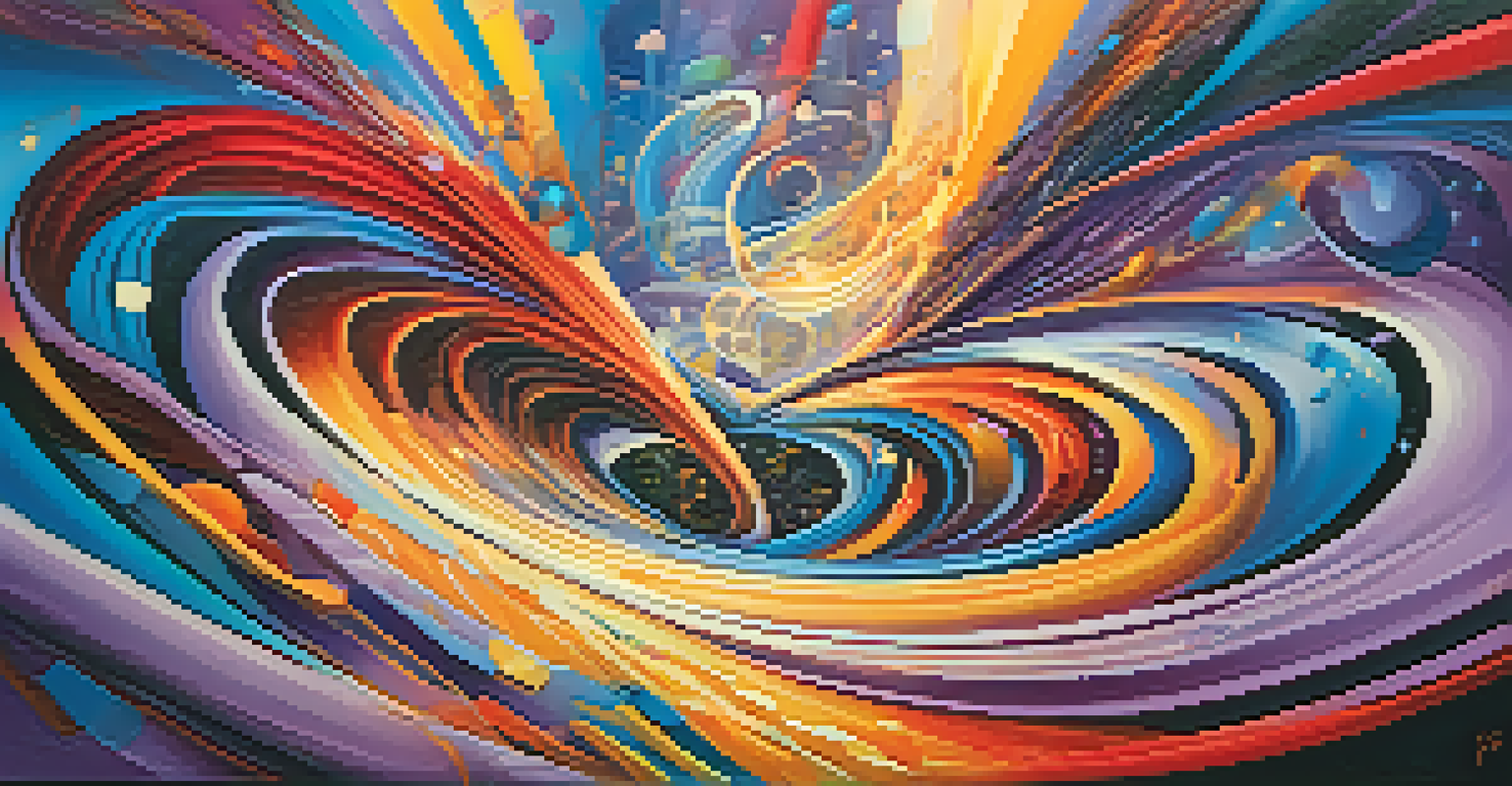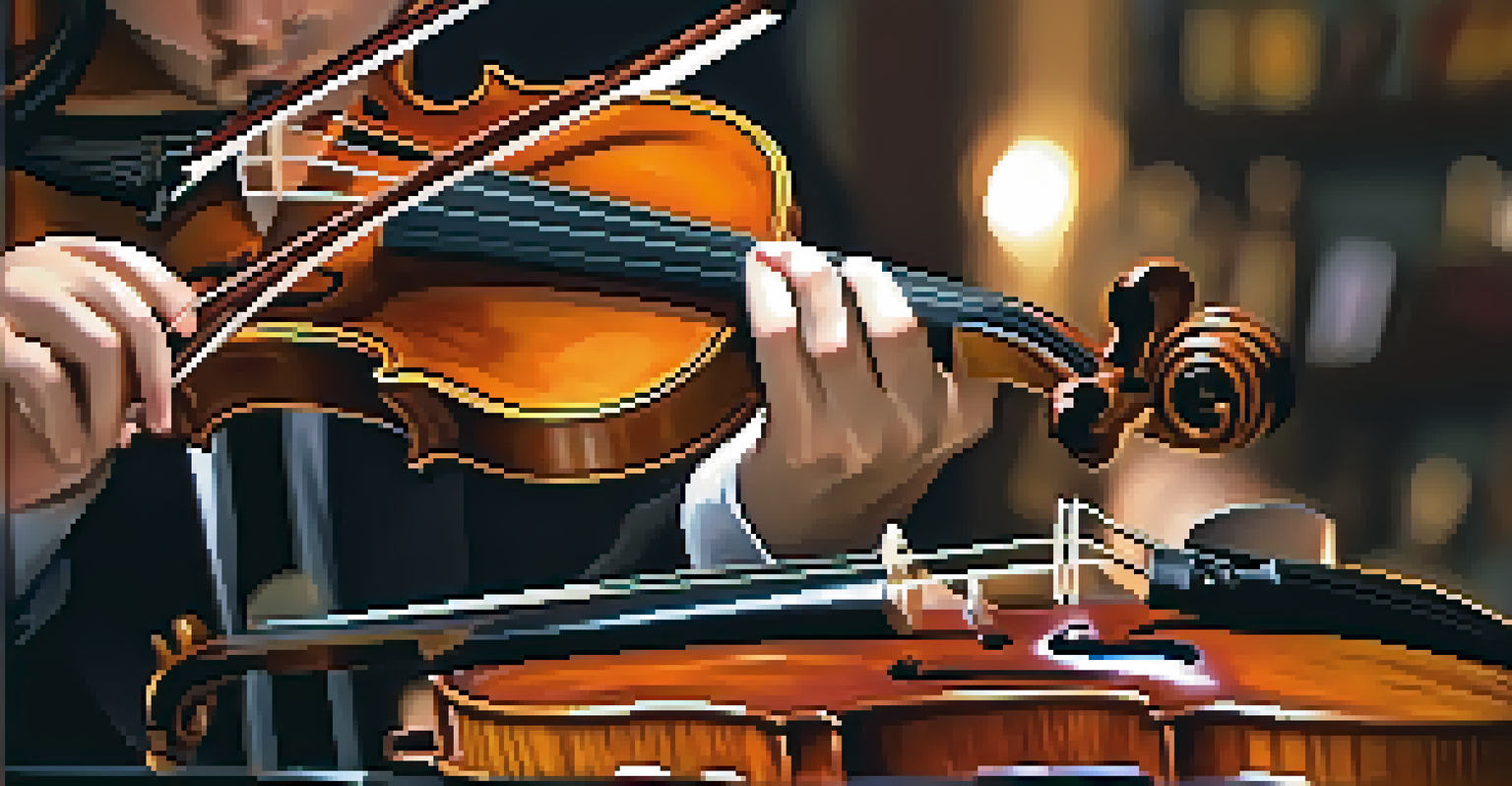Analyzing Film Scores: Structure and Emotion in Music

Understanding the Role of Film Scores in Cinema
Film scores serve as the emotional backbone of a movie. They guide the audience's feelings, enhancing suspense, joy, or sadness at pivotal moments. This invisible yet powerful force often goes unnoticed, yet it is crucial for storytelling.
Music can change the world because it can change people.
Consider a thrilling chase scene: the music builds tension, quickening the heartbeat of the viewer. Conversely, during a tender moment, a soft melody can evoke tears. Without the score, these scenes would feel flat and disengaging.
Ultimately, film scores are not just background noise; they are integral to the cinematic experience, shaping our emotional responses and our connection to the characters.
The Basic Structure of Film Scores
Film scores typically follow a structure that complements the film's narrative. This can include motifs, themes, and variations that reflect character arcs or plot developments. For instance, a villain might have a distinct theme that recurs throughout the film, signaling their presence.

By employing specific musical techniques, composers create a sense of anticipation or resolution. The use of crescendos can amplify action scenes, while gentle harmonies can give pause during reflective moments.
Film Scores Shape Emotions
Film scores are essential in guiding audience emotions, enhancing the overall cinematic experience.
This structured approach allows viewers to subconsciously understand the film's emotional landscape, making the music an essential component of the storytelling process.
The Emotional Impact of Music in Film
Music has a profound ability to evoke emotions, and film scores harness this power masterfully. Through the use of dynamics, tempo, and instrumentation, composers elicit specific feelings, amplifying the viewer's experience. Think of the haunting strings in a horror film that create an atmosphere of dread.
The music is the emotional core of the film. It can transform a scene and affect the audience's perception.
Furthermore, cultural context plays a role; certain instruments or musical styles can evoke different emotional responses based on the audience's background and experiences. A sweeping orchestral score might stir feelings of grandeur, while a minimalist piano piece can evoke introspection and solitude.
This emotional manipulation is intentional, allowing filmmakers to craft a shared emotional journey that resonates with audiences long after the credits roll.
Analyzing Iconic Film Scores and Their Techniques
Let's take a closer look at some iconic film scores to understand their techniques. For example, John Williams' score for 'Star Wars' uses a bold orchestral arrangement that instantly captures the epic nature of the saga. The main theme is recognizable and evokes a sense of adventure.
Similarly, Hans Zimmer's work on 'Inception' employs layered soundscapes, combining orchestral elements with electronic music. This fusion creates a dreamlike quality that mirrors the film's exploration of consciousness and reality.
Silence Amplifies Musical Impact
Strategic use of silence in film scoring heightens tension and makes subsequent musical cues more impactful.
These scores not only enhance the films but also stand alone as musical masterpieces, showcasing how composers weave complex emotions into their structures.
The Role of Silence in Film Scores
Interestingly, silence can be just as powerful as music in a film score. Strategic use of silence allows for moments of reflection and heightens the impact of subsequent musical cues. Think of a scene where tension builds before a sudden, explosive musical hit; the silence amplifies the shock.
This technique encourages viewers to lean in, creating a sense of anticipation. It also serves to contrast with the score, making the music feel more pronounced when it does appear.
In essence, silence is a tool in a composer's arsenal, effectively shaping the emotional landscape of a film just as much as the notes themselves.
The Evolution of Film Scoring Techniques
Over the years, film scoring has evolved significantly, adapting to changes in technology and audience expectations. Early scores were often simple piano melodies, but as film technology advanced, so did the complexity of the music. Today, composers have access to a vast array of instruments and digital tools.
This evolution has led to innovative scoring techniques, such as the use of synthesized sounds and sampling that blend seamlessly with traditional orchestration. Composers like Danny Elfman have pushed boundaries, creating unique soundscapes that redefine what a film score can be.
Evolution of Scoring Techniques
Film scoring has evolved with technology, leading to innovative techniques that blend traditional and modern elements.
As the medium of film continues to evolve, so too will the music that accompanies it, reflecting cultural shifts and technological advancements.
Future Trends in Film Scoring
Looking ahead, the future of film scoring seems promising with the rise of technology and artificial intelligence. AI is beginning to play a role in composing, offering fresh perspectives and innovative sounds that can enhance traditional methods. However, the emotional touch that human composers bring remains irreplaceable.
Moreover, there’s a growing trend towards personalized soundtracks in interactive media, where viewers can choose how they want to experience a film's score. This could create a more immersive and tailored viewing experience, engaging audiences like never before.

As we embrace these new trends, the essence of film scoring—its ability to evoke emotion—will always be at the heart of this art form.